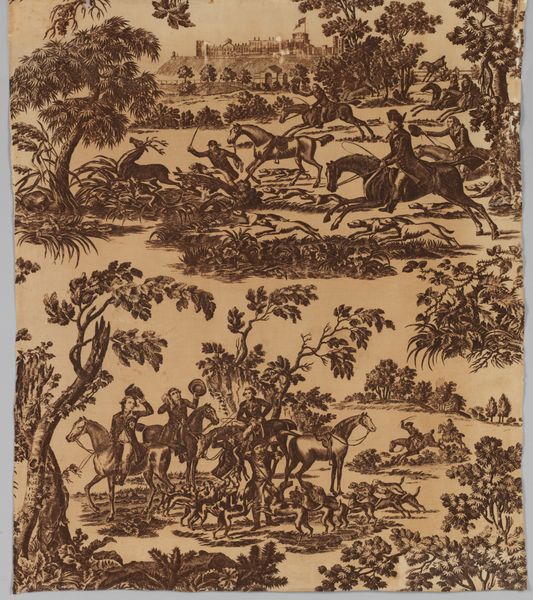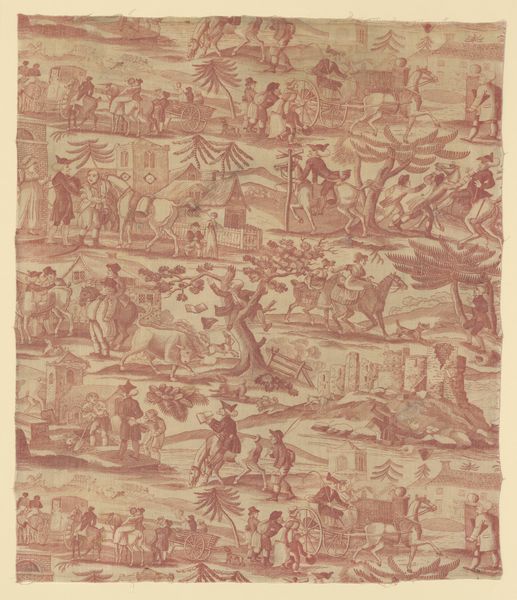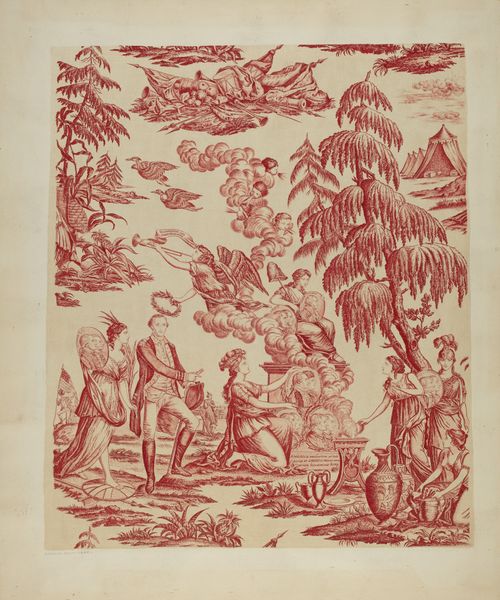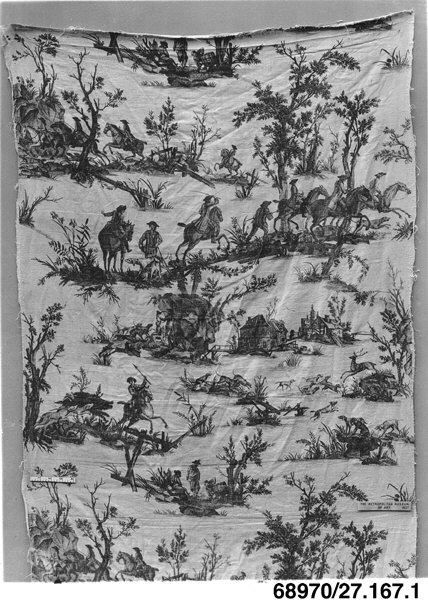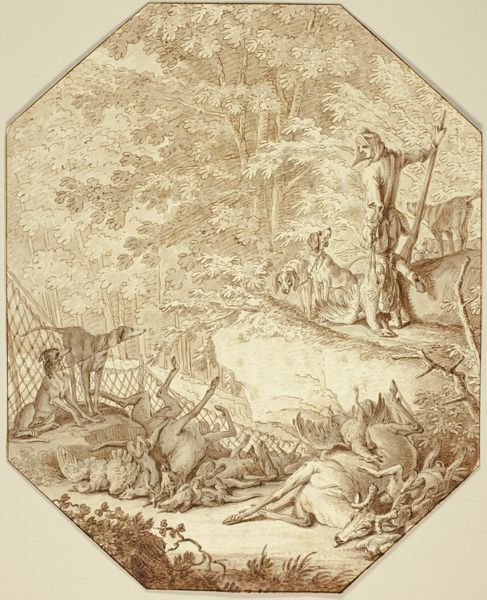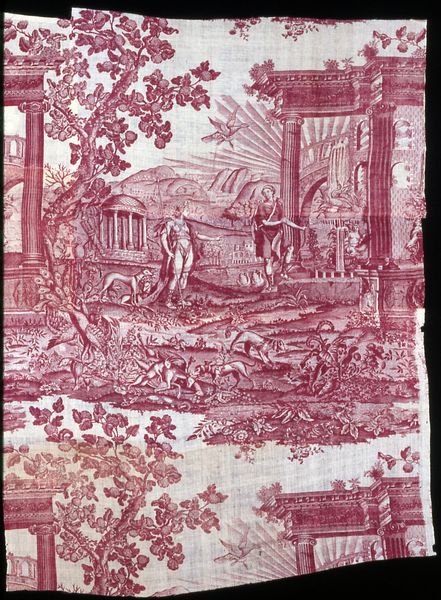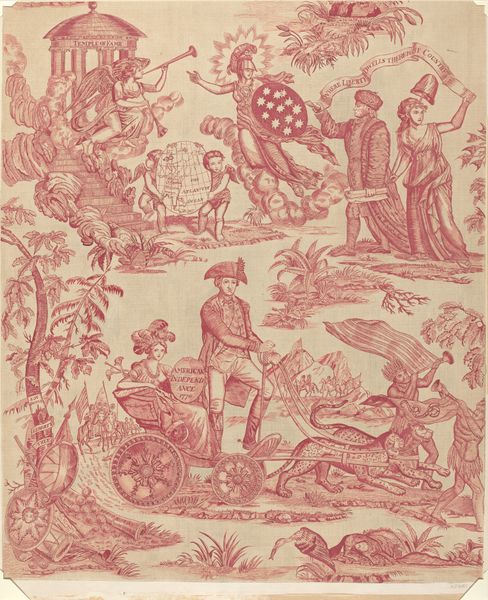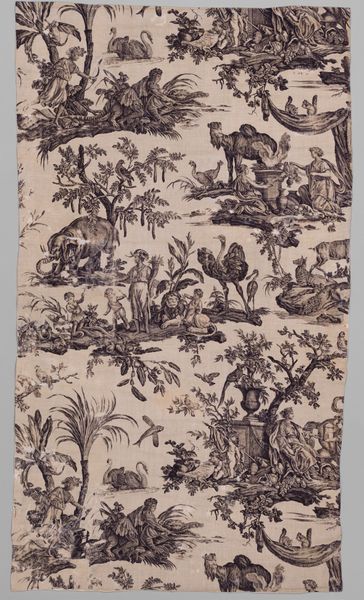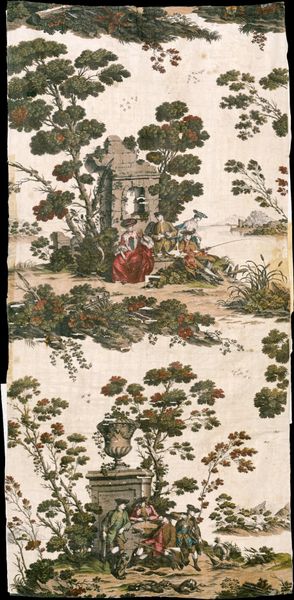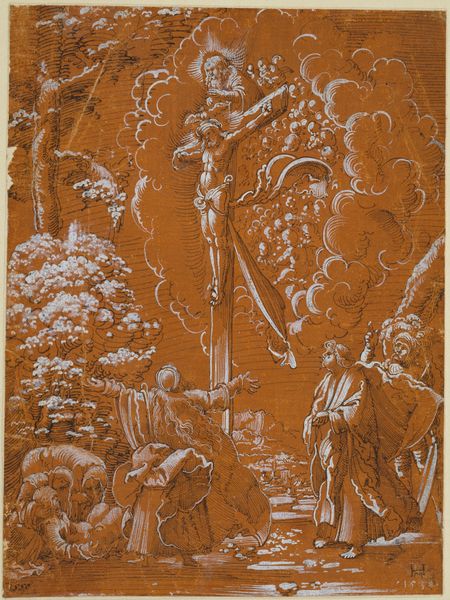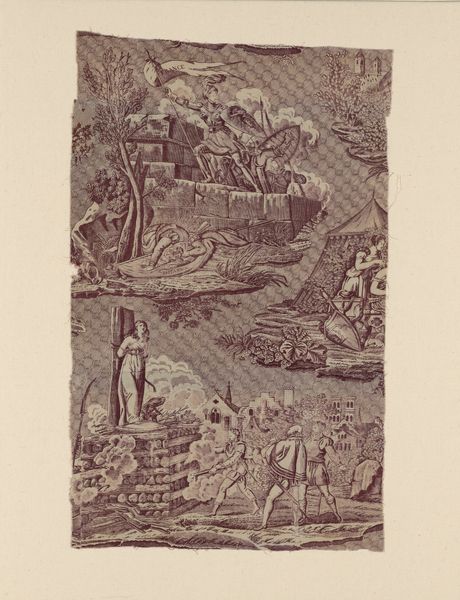
La Route de Jouy (The Road to Jouy) (Furnishing Fabric) 1825 - 1835
0:00
0:00
print, weaving, textile
#
narrative-art
# print
#
weaving
#
landscape
#
textile
#
romanticism
#
genre-painting
Dimensions: 40.64 × 57.6 cm (16 × 18 7/8 in.)
Copyright: Public Domain
Curator: This printed textile, "La Route de Jouy," dating from around 1825 to 1835, presents a fascinating slice of French life. Created after a design by Horace Vernet, it now resides here at the Art Institute of Chicago. The scene appears to be a picturesque depiction of a hunt. What strikes you first about it? Editor: Well, visually, it's immediately quite arresting. The monochromatic red against the light ground creates this dreamlike effect, like a memory fading or a ghost of an image. It gives it a strangely detached feel despite the very active hunting scene portrayed. Curator: Absolutely, that signature toile effect. Toile de Jouy as a genre had specific connotations and class implications at the time. Produced in the Jouy-en-Josas manufacture, it reflects a very particular idealized view of leisure and rurality appreciated by the French upper class. What kind of stories did this aesthetic tend to reinforce? Editor: The hunt, the picnic, scenes of bucolic domesticity… It reinforced narratives of patriarchal power and landed gentry. We must consider, though, who *isn't* shown in these pictures. The working classes, for example, the people who produce and maintain these idyllic estates—they are mostly invisible, absent from the decorative arts favored by the bourgeoisie. This silence has deep resonance. Curator: Exactly! The placement of textiles like these is not innocent. It was meant for private drawing rooms. Imagine it wrapping around the walls of a salon – creating a miniature world that naturalized power relationships and class divides. Even a seemingly charming landscape participates in the production of ideological values. Editor: This resonates with the construction of national identity. These landscapes were more than scenic; they bolstered specific notions of Frenchness rooted in a particular social hierarchy. And thinking about "Romanticism" – shouldn't we challenge the romanticization of inequity embedded in so many artworks? The hunt becomes not just sport, but an exercise of power. Curator: Indeed. And seeing it here in a museum forces a certain questioning, I think. Considering the art market's relationship with the wealthy, where does such art sit within those narratives today? Editor: Perhaps this fabric's initial intent has morphed; in its museum context, it almost mocks those old assumptions, obliging us to be critical in what we inherit.
Comments
No comments
Be the first to comment and join the conversation on the ultimate creative platform.
